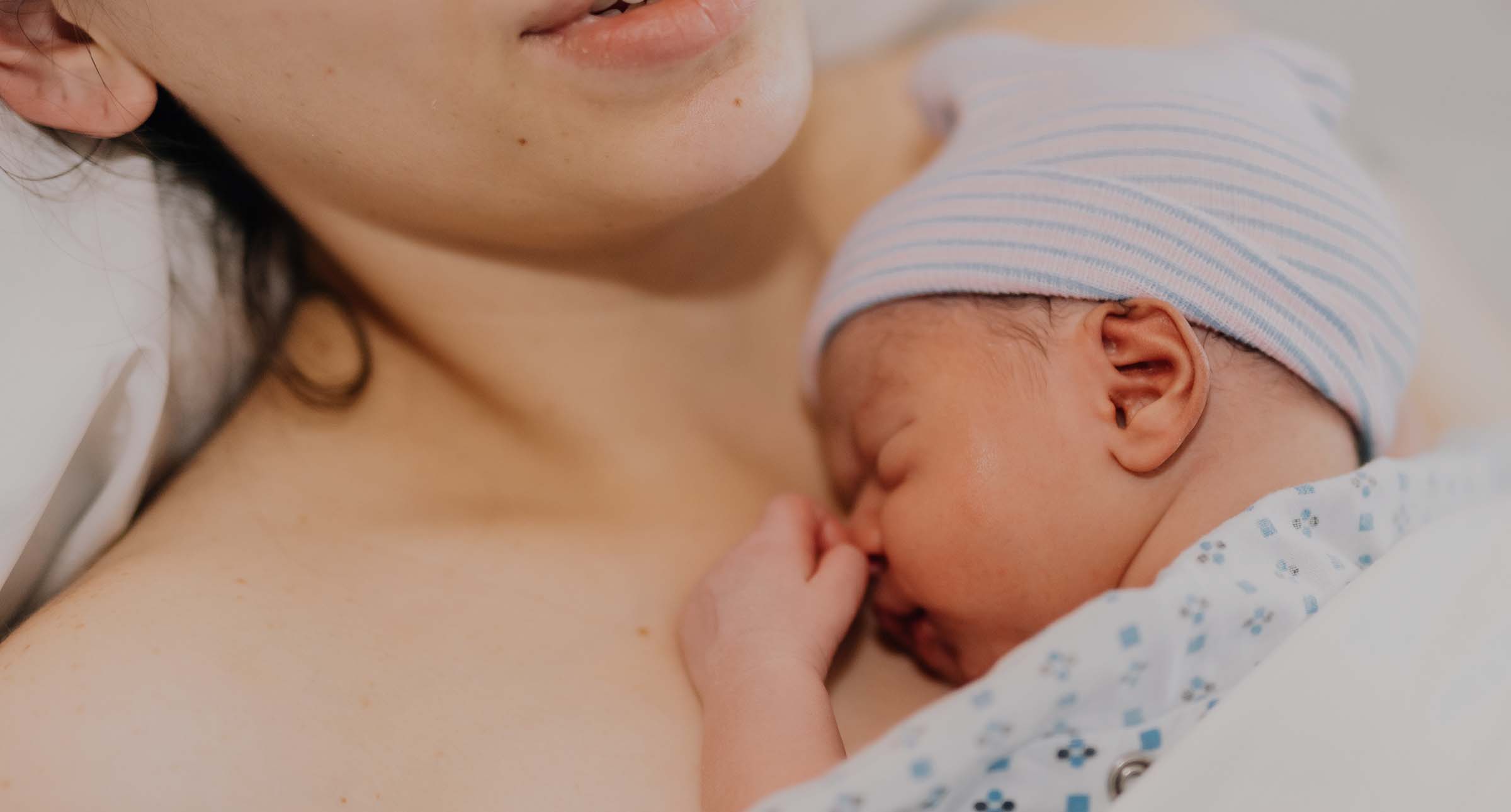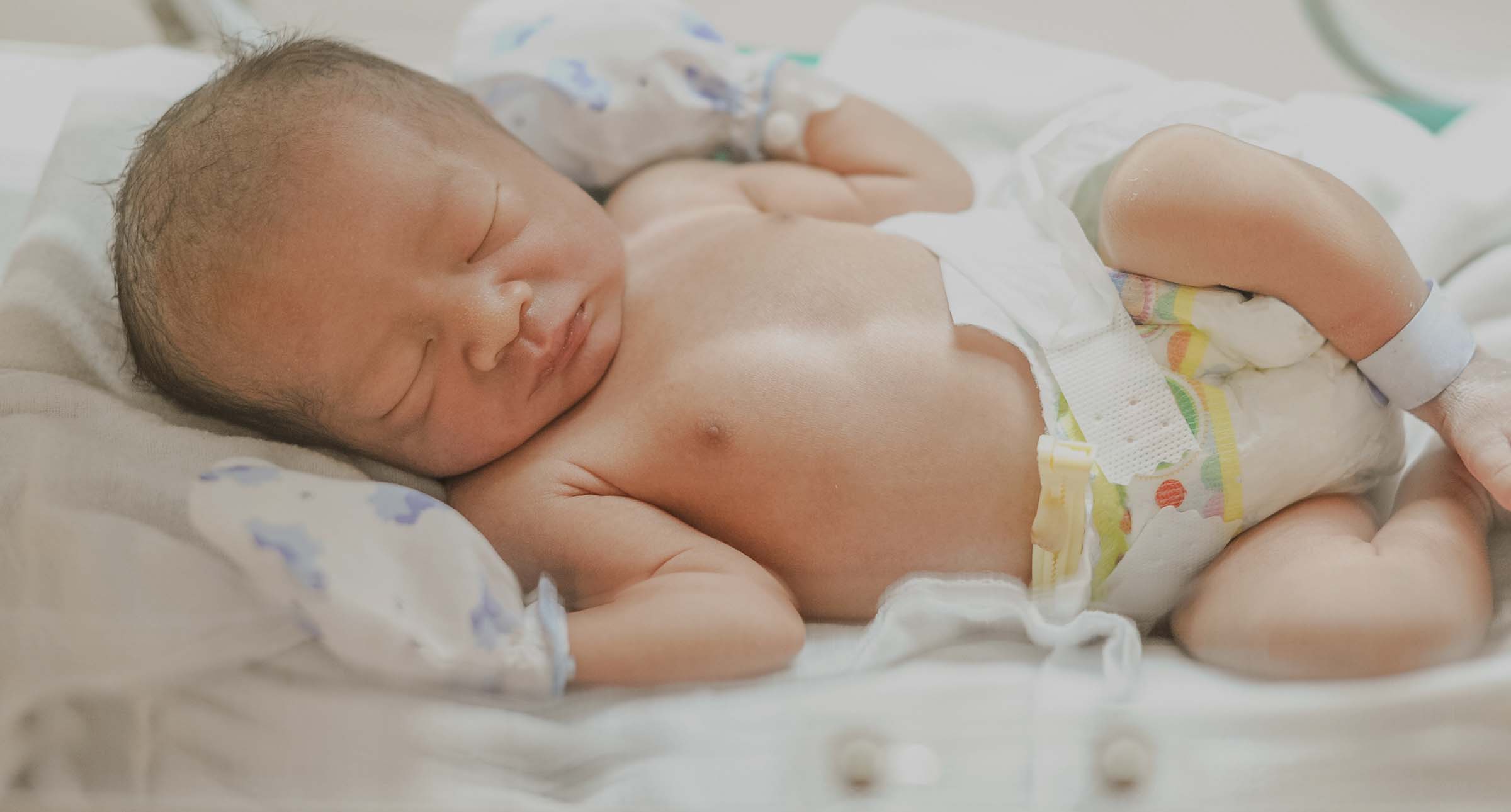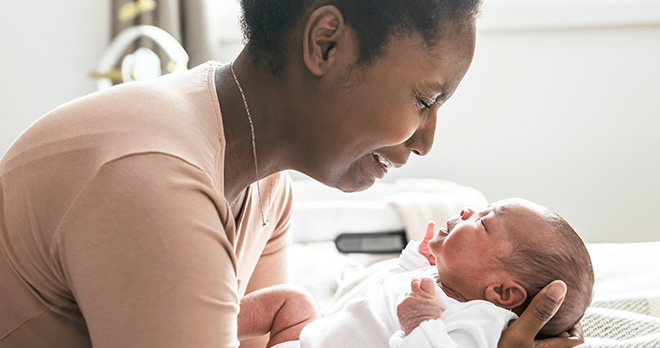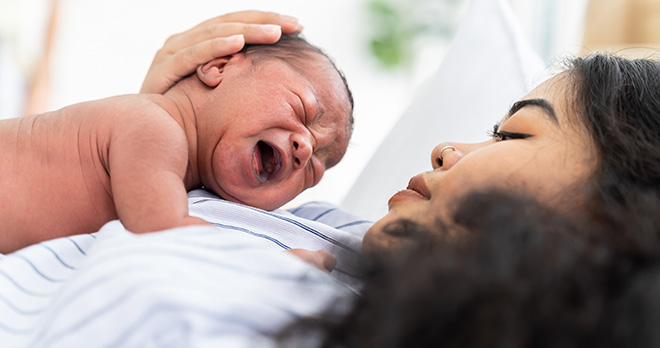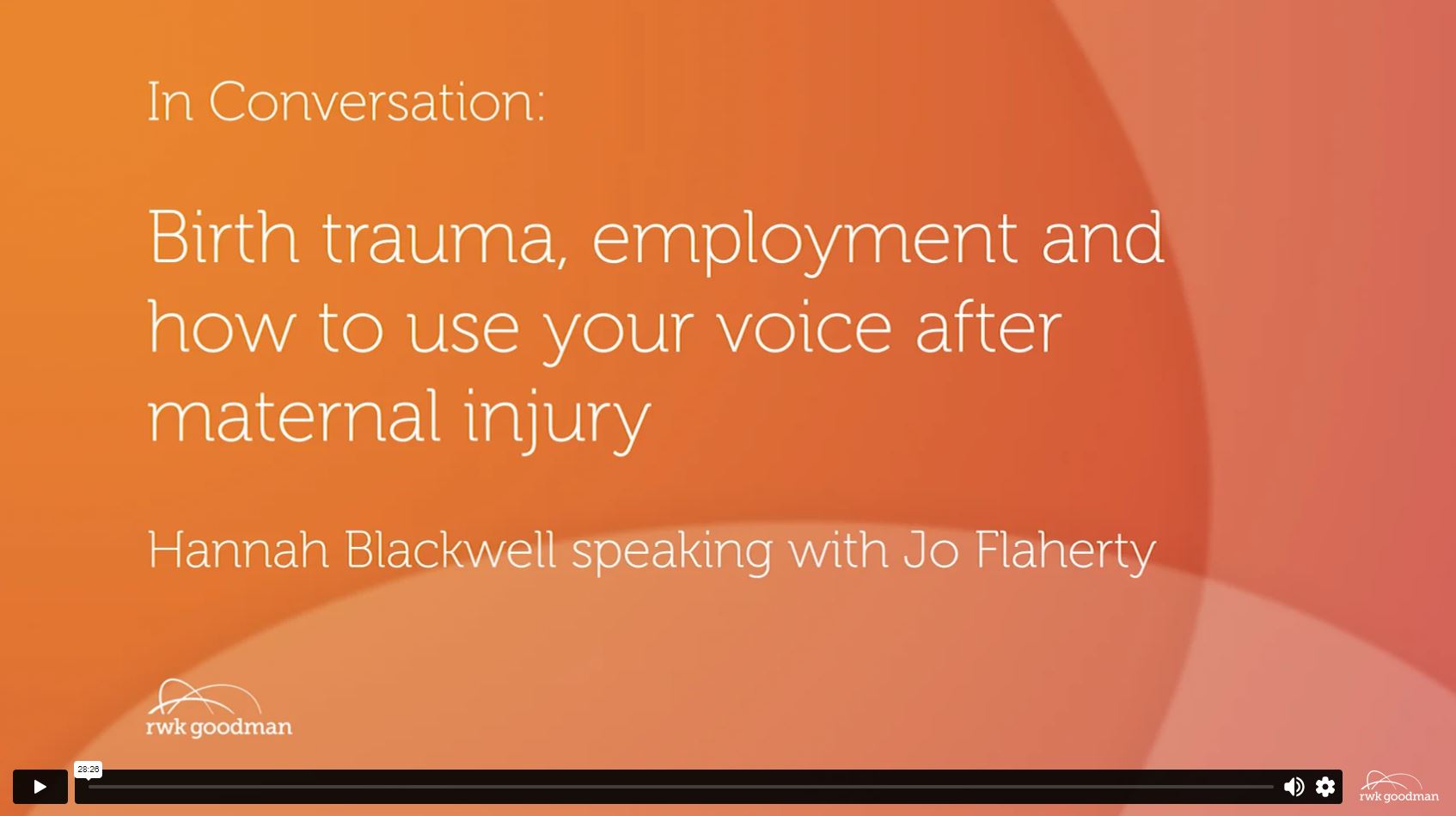Is a perineal tear serious? What you need to know and when you may have a claim

Perineal tears from childbirth are common. However, they are usually minor with no long term impact to mums. When you’ve experienced a serious perineal tear though, the impact can be life-changing. We’re here to explain what to consider when you’ve sustained a perineal tear.
What is a severe perineal tear?
A perineal tear, is more commonly known as a tear during childbirth. Up to nine in 10 first-time mothers who have a vaginal birth will have some sort of tear, graze or episiotomy. They occur in the perineum; a small area between the anus and vagina. Tears are usually referred to in four different categories; first degree, second degree, third degree and fourth degree.
First and second-degree tears, more often than not, heal quite well and do not usually have an impact on future vaginal births.
Third- and fourth-degree tears are more significant and are usually deeper, extending to the muscle that controls the anus (the anal sphincter). These tears, or ‘OASI’ (Obstetric Anal Sphincter Injury), need to be repaired by an appropriately trained clinician. Repair should take place in an operating theatre, with good lighting and with appropriate instruments. These tears can have more of a physical impact on women, particularly if they are not diagnosed and treated quickly. Long term complications can include urinary and faecal incontinence.
A rectal buttonhole tear is a rare injury but is where a hole appears between the vagina and the rectum. The anal sphincter itself does not tear but the buttonhole tear can cause wind and faeces can pass through the vagina.
For most women, the tears they experience are minor and heal quickly. Sadly, that isn’t the case for everyone. For some, these birth injuries can have a life-long impact, physically, emotionally and mentally.
Whilst these injuries are not always avoidable there are things that can be done to reduce the chances of them occurring or reduce the severity and it is worth discussing this with your midwife.
Can you tear internally during childbirth?
As well as the possibility, of a perineal tear during childbirth, you can also suffer from tears elsewhere. Some other types of tears include:
- Labial tears – which can either be in one side or both sides and may need to be repaired with stitches.
- Vaginal wall tear – these occurs inside the vagina and could be due to the way the baby is positioned or if instrumental delivery was required. They might be similar to an abrasion but sometimes they might be deeper and require treatment.
Most tears will heal within four to six weeks and you will receive guidance from your healthcare team about how to assist healing. More severe tears but take longer to heal.
Trauma from an internal tear, perineal tear or episiotomy can in rare circumstances result in heavy bleeding that amounts to a Post-partum haemorrhage (PPH).
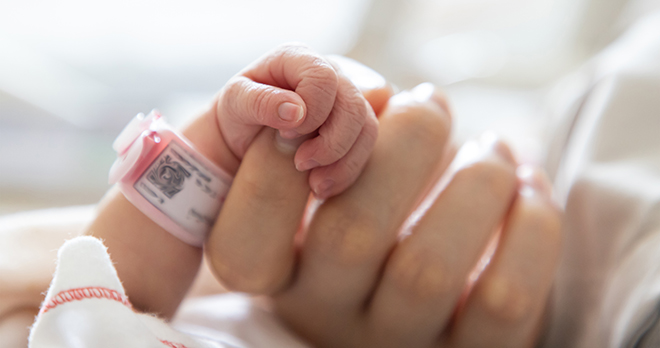
What you need to know about heavy bleeding after birth
We’re here to explain when you might need to be on the lookout for signs of heavy bleeding or PPH.
As a new mum, it is normal to experience some blood loss. However, some mums experience the rare but serious complication of post-partum haemorrhage (PPH). Here’s what you need to know if that happens.
Why did I sustain a severe perineal tear during birth?
A severe perineal tear which involves the sphincter muscles are often hard to predict. However, they are more likely to occur if the following is needed during your birth:
- You have a large baby (usually a large baby is considered weighing over four kilos / nine pounds);
- If the baby’s shoulder gets stuck behind the pubic bone during delivery (shoulder dystocia);
- You need a instrumental vaginal birth (forceps or ventouse);
- You have had a long second stage of labour (pushing out the baby for a long time);
- Your first vaginal birth.
What are the long-term complications of a perineal tear?
It is a serious complication of childbirth to have suffered from severe perineal trauma and damage to your anal sphincter. With timely and proper surgical repair, you may not suffer from any long-term symptoms.
However, some women will suffer from symptoms of urinary and/or anal incontinence after a perineal tear. Some women may also go on to develop a prolapse as a result of the trauma to the pelvic muscles.
Symptoms of anal incontinence include being unable to control the passage of gas and/or stool. The sphincter muscles (internal and/or external) may have been damaged as well as damage to nerves in the anus and pelvic floor. Whilst the damage may have occurred during childbirth, sometimes the symptoms and weakness does not show until later in life. Symptoms of urinary incontinence may include leaking urine when coughing, laughing, sneezing or when exercising.
Rarely, after repair of a sphincter injury a connection can form between the vagina and the rectum (rectovaginal fistula), which allows faecal matter to pass through the vagina. Further surgery will be needed to close the fistula.
Without treatment, symptoms of urinary and/or faecal incontinence will likely get worse with age as a result of hormonal changes during the menopause.
What is the recommended treatment after sustaining a perineal tear?
It is likely in the first instance that you will be asked to carry out pelvic floor exercises to strengthen the pelvic floors muscles and help regain better sphincter control. You should be given the option to be referred to a Pelvic health physiotherapist for guidance and support. The physiotherapist can also talk you through other conservative measures to manage symptoms of anal incontinence including biofeedback treatment, scar massage and anal irrigation.
Depending on the severity of your symptoms, you may need treatment beyond the conservative measures mentioned above. For anal incontinence, there are surgical treatment options including an operation to repair damaged muscles in your anus (sphincteroplasty) or placing a small electronic device under your skin that helps the muscles and nerves in your anus work better (sacral nerve stimulation). Occasionally, and in the most serve cases, a procedure called a colostomy may be considered. This is where your bowel is diverted through a hole made in the stomach and the faecal matter is collected in a bag.
In terms of treatment for urinary incontinence or prolapse, there are other conservative measures other than physiotherapy which include the use of a pessary (inserted into vaginal to help support pelvic organs). There are also surgical options available to improve your symptoms.
Can a perineal tear reopen?
If you needed stitches to repair a perineal tear or an episiotomy after childbirth, then occasionally you may experience delayed healing and ‘perineal wound breakdown’. This is typically when an infection develops around the stitches or bleeding from underneath puts pressure on the stiches, and causes the perineal tear to reopen. This will likely result on pain and new bleeding, and possibly signs of infection.
You need to seek advice from your healthcare team who will need to establish whether there is an infection present (usually by taking a swab of the area). It’s unlikely the wound will be restitched with an infection present and you will need to be treatment with antibiotics. If there is no infection present, you may need to be restitched by your healthcare team.
What happens if a perineal tear is left untreated?
Women who suffer these birth injuries can recover well if the injury is diagnosed and repaired straight away. The sooner the repair takes place, the more likely it is to be successful. You should be examined after birth by a midwife or doctor to assess the extent of any tearing and this will include an examination of your rectum to check whether the sphincter(s) have been damaged.
Buttonhole tears for example, if not diagnosed and repaired properly straight away, can lead to rectovaginal fistulas (which can cause further incontinence symptoms). If too much time is allowed to pass following the injury, the tissues can become swollen and may become infected, making the success of the repair less likely.
In addition, inexperienced attempts at anal sphincter repair may contribute to symptoms of long-term anal incontinence. Generally, surgery to repair a tear will be avoided if it has been several hours since the injury occurred. That is because of the risk of infection and likely failure of the repair long-term. Therefore, as soon as the injury has occurred, the repair needs to take place, to give the injury the best chance of healing. These repairs need to be carried out by an experienced surgeon in theatre, with a colorectal surgeon present, in case their input is needed.
Some women who have suffered perineal tears and whom we represent have undergone repairs too late following childbirth. This has caused the repair to breakdown and fail, leading to ongoing symptoms which can only be managed rather than improved. Those clients have effectively lost the opportunity to regain normal urinary and faecal continence as a result of that repair being diagnosed and treated too late.
Is sustaining a third- or fourth- degree tear during birth considered traumatic?
If you have suffered a third or fourth degree tear, you may have suffered a traumatic birth. In some circumstances this can lead to anxiety, depression or even PTSD. Symptoms of PTSD can include flashbacks, heightened anxiety, low mood or isolation. Some mothers may find it hard to bond with their baby as a result of the birth trauma.
If as a result of the perineal tear you are left with symptoms of faecal or urinary incontinence, this can also have a significant impact on your mental wellbeing. The research looking at the impact of anal incontinence found generally that women who have sustained severe perineal trauma and developed higher rates of negative body image, sexual dysfunction and increased levels of anxiety and depressions. There still remains a stigma about anal incontinence in society and this leaves women feeling very isolated and ashamed to talk about the impact of anal incontinence.
What will happen if I have another baby after a third- or fourth-degree tear?
If you have suffered from an OASIS (or a third- or fourth-degree perineal tear) in your first birth then you are exposed to the risk of a repeat OASIS in your second birth.
There is some conflicting research on whether further pregnancies increase the overall risk of anal incontinence. There is some evidence to say that even if an OASIS does not occur during the second birth, there is still a risk that the second labour can increase the risk of developing anal incontinence, as a consequence of prolonged labour or instrumental delivery. However, elective caesarean delivery at second pregnancy has been quoted not to be protective of anal incontinence even in cases of an OASIS at first birth.
Many women go on to have a straightforward vaginal birth after a third- or fourth-degree tear. The important thing to be aware of is that if you have a right to make informed choices about the circumstances in which you give birth. You should speak to your healthcare team about your individual risk of having another third- or fourth-degree tear and what steps can be taken to minimise this risk.
Can you sue for sustaining a severe perineal tear?
Yes, there can be circumstances where substandard care has caused a perineal tear including:
- Failure to consider the risks of vaginal delivery and failing to advise the patient properly before birth.
- Failing to take steps during childbirth to minimise the risk of perineal tears
- Negligent management of perineal tear including the delay in diagnosis and repair as well as substandard repair.
As birth injury solicitors ourselves, we help clients who have suffered from severe perineal tears. Here is how we helped a client who suffered a fourth-degree tear during the delivery of her first child.
Example one
Our client was pregnant with her first child after a successful round of IVF, following difficulties with falling pregnant. During her pregnancy she underwent a test to establish whether she had gestational diabetes and she was told this was negative. Our investigation with an expert in obstetrics/fetal medicine found that this test for gestational diabetes was carried out negligently and should have been repeated. Our client should have been identified as having gestational diabetes (which is associated with having a baby of a large birth weight). Our investigation also found that when the baby’s weight was assessed on an ultrasound scan, it was underestimated negligently, and the overall growth of the baby was incorrectly plotted on the growth chart. This meant, our client was not identified as having a large (for gestational age) baby. This should have been identified and the options for the mode of delivery discussed (this would have included the option for caesarean section). Having a large baby gives you an increased risk of sustaining a severe perineal tear and the mother needs to be informed of the risk of proceeding with a vaginal delivery. Our client went onto have a complicated vaginal delivery. Her baby’s shoulder became stuck behind the pubic bone during delivery (shoulder dystocia) and following the use of forceps, our client sustained a third-degree tear. The repair of the tear was delayed and ultimately the repair failed which left her with an extensive defect in the external anal sphincter which resulted in faecal urgency, incontinence and loss of flatus control. She also went onto suffer from symptoms of urinary incontinence and prolapse. We supported our client and achieved a sum of compensation for her (£750,000 rpi).
Here is an example of how we helped a client that suffered severe perineal tear as a result of a negligently managed labour involving forceps:
Example two
Our client was pregnant with her first child and had a relatively straightforward pregnancy. She went into labour and after she had been pushing for well over an hour, it was decided to try and deliver the baby with forceps. Our client sustained a severe fourth degree tear. The tear was surgically repaired, and she was informed that to give the repair the best chance, then she would needed to be fitted with a temporary stoma. This is where the bowel is diverted through a hole made in the stomach and the faecal matter is collected in a bag. The stoma was reversed six months later but our client was left with disabling on-going faecal incontinence, lack of flatus control and chronic abdominal pain. She would require further surgery in the future to improve her anal incontinence. Our investigations found that the use of the forceps was negligent in that it was she should have been taken to theatre for trial of the forceps and it was found that the clinician was not appropriately trained or skilled in carrying out a delivery of this kind (the baby was higher up in the birth canal when the forceps were applied making it more complex). We also found that there was failure to abandon the use of the forceps (there was three pulls of the forceps with no descent of the baby). We supported our client and achieved a sum of compensation for her (£350,000 rpi). This sum of money included an allowance for the recommended treatment she needed to improve her anal incontinence which included the use of a sacral nerve stimulator. From our investigations, we established that as well as the physical injury, the Clamant sustained a significant psychiatric injury as a result of the traumatic birth and dealing with her physical symptoms. She was also unable to return to work as planned and therefore we recovered some loss of earnings on her behalf.
The impact of a perineal tear may leave you feeling you have noone to speak to. We’re here to listen, and help you get the compensation you deserve.
Call now
